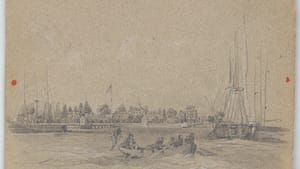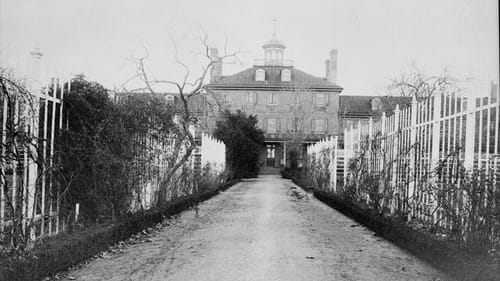Stay in the Loop
BSR publishes on a weekly schedule, with an email newsletter every Wednesday and Thursday morning. There’s no paywall, and subscribing is always free.
The history of quarantine
The Philadelphia City Archives present ‘The History of the Lazaretto’

With the spread of COVID-19 to nearly 70 countries and 36 US states (including the District of Columbia) as of March 10, 2020, many wonder whether cities like Philadelphia are prepared for the epidemic. While the Department of Public Health has taken steps to prevent its spread and reiterates that the risk to the average Philadelphian remains extremely low, it’s worth noting that the city does have a unique place in the history of quarantines. A timely exhibit at the Philadelphia City Archives takes visitors through the history of the oldest quarantine station in the United States: the Philadelphia Lazaretto.
First stop from the sea
For more than 150 years, Philadelphia operated two facilities known as lazaretto, or quarantine hospitals for maritime travel. The first lazaretto, located at Province Island, was built in 1743. Fifty years later, however, nearly 10 percent of the city population died from a yellow fever epidemic, and even more fled out of fear. In response, the city established a Board of Health and built a second lazaretto in 1799, located in Tinicum Township and further from the densely populated city.
Any ship passing along the Delaware River and looking to dock in Philadelphia would first stop at the Philadelphia Lazaretto. There, the Quarantine Master and physician would inspect the cargo, crew, and passengers for any sign of contagious disease. If they were cleared, ships would leave the next day with a certificate of health and continue to their destination.
Not all ships were so lucky. If any disease was found, a dreaded yellow flag would be raised at the site. The delay in the ship’s journey could be anywhere from a week to a month as the ship's cargo would be sterilized and fumigated and all crew and passengers were quarantined. Healthy travelers waited in other facilities while sick passengers were treated in the Lazaretto hospital with very basic medical techniques to lessen symptoms.
Millions arrive
Millions of passengers, including immigrants arriving in Philadelphia, passed through the Lazaretto. This exhibit highlights two important moments from the quarantine hospitals' history. In 1800, a naval ship known as the U.S.S. Ganges intercepted two ships, the Prudent and Phebe, that were illegally trafficking Africans off the coast of Cuba. The ships were brought back to the Philadelphia Lazaretto, where the 135 Africans on board were detained and treated. Following a court order, the Pennsylvania Abolition Society took guardianship over the men, women, and children, who were given the last name “Ganges” and placed in indentured servitude throughout the greater Philadelphia area.

But as the exhibit notes, quarantine hasn’t always been effective as one would hope. In 1870, a careless ship known as the Home arrived at the Lazaretto, having lost its captain to sickness and come to a filthy condition. During its fumigation process, many fell ill due to cross-contamination. The outbreak killed at least 10 people, including key members of Lazaretto staff. A diagram of the facility from this period shows the scene of the outbreak, with various arrows pointing to the paths of infection. The staffers who succumbed were commemorated in the annual city address, as displayed in the exhibit.
An important legacy
The Board of Health of the City of Philadelphia operated the Tinicum Township facility until 1895. Following its closure, the Lazaretto was repurposed as a recreational facility and seaplane port during World War II. Through local efforts by preservationists like the Friends of the Lazaretto, the remains of the Lazaretto have been preserved and the site is listed on the National Register of Historic Places. This small exhibit at the Philadelphia City Archives explores the Lazaretto’s important legacy in US immigration, labor history, and the development of public health practice. For me, it certainly brought some comfort: dealing with infectious disease has been a longstanding practice for our city, and quarantine is one of the best solutions.
What, When, Where
The History of the Lazaretto. Through April 30, 2020 at Philadelphia City Archives, 548 Spring Garden Street, Philadelphia. (215) 685-9401 or phila.gov/phils/carchive.htm.
The City Archies are wheelchair-accessible. Free off-street parking is available at the nearby Target lot.
Sign up for our newsletter
All of the week's new articles, all in one place. Sign up for the free weekly BSR newsletters, and don't miss a conversation.

 Emily Esten
Emily Esten